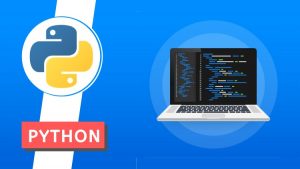Django and Celery can be combined to achieve distributed task processing in your web applications. Celery is a powerful distributed task queue system that allows you to offload time-consuming tasks to be executed asynchronously in the background. Here’s how you can integrate Django with Celery:
- Install Celery:
- Install Celery using
pip:pip install celery
- Configure Celery:
- Create a new file called
celery.pyin your Django project’s directory. - Add the following code to configure Celery:
import os from celery import Celery # Set the default Django settings module for the 'celery' program. os.environ.setdefault('DJANGO_SETTINGS_MODULE', 'your_project_name.settings') app = Celery('your_project_name') app.config_from_object('django.conf:settings', namespace='CELERY') app.autodiscover_tasks() - Replace
'your_project_name'with the actual name of your Django project.
- Configure Django settings:
- Open your Django project’s
settings.pyfile and add the following configuration settings for Celery:CELERY_BROKER_URL = 'amqp://localhost' # Replace with your broker URL CELERY_RESULT_BACKEND = 'db+sqlite:///results.sqlite3' # Replace with your result backend # Configure additional Celery settings if needed # For example, you can set task time limits, concurrency, etc. # More details can be found in the Celery documentation
- Create tasks:
- Create a new file called
tasks.pyin one of your Django applications. - Define your tasks as Python functions or classes using the
@app.taskdecorator. For example:from celery import shared_task @shared_task def process_data(data): # Perform time-consuming task here # ... return result
- Run Celery worker:
- Open a command prompt or terminal and navigate to your Django project’s directory.
- Start a Celery worker process using the following command:
celery -A your_project_name worker --loglevel=info - Replace
'your_project_name'with the actual name of your Django project.
- Trigger tasks from Django views:
- In your Django views or other parts of your code, import the tasks you defined in
tasks.py. - Call the tasks asynchronously using the
.delay()method. For example:from your_app.tasks import process_data def my_view(request): # ... process_data.delay(data) # ...
By following these steps, you can integrate Celery with Django and distribute time-consuming tasks to be processed asynchronously by Celery workers. This allows your Django application to offload resource-intensive operations, such as sending emails, processing large datasets, or generating reports, to the background, providing better responsiveness and scalability.
Remember to configure the Celery broker and result backend according to your specific setup and requirements. You can choose from various message brokers such as RabbitMQ, Redis, or even databases like SQLite or PostgreSQL. Similarly, the result backend can be configured to store task results in a suitable location, such as a database or a message broker.
For more advanced usage and configuration options, such as task retries, task routing, and task monitoring, refer to the official Celery documentation (https://docs.celeryproject.org/)




